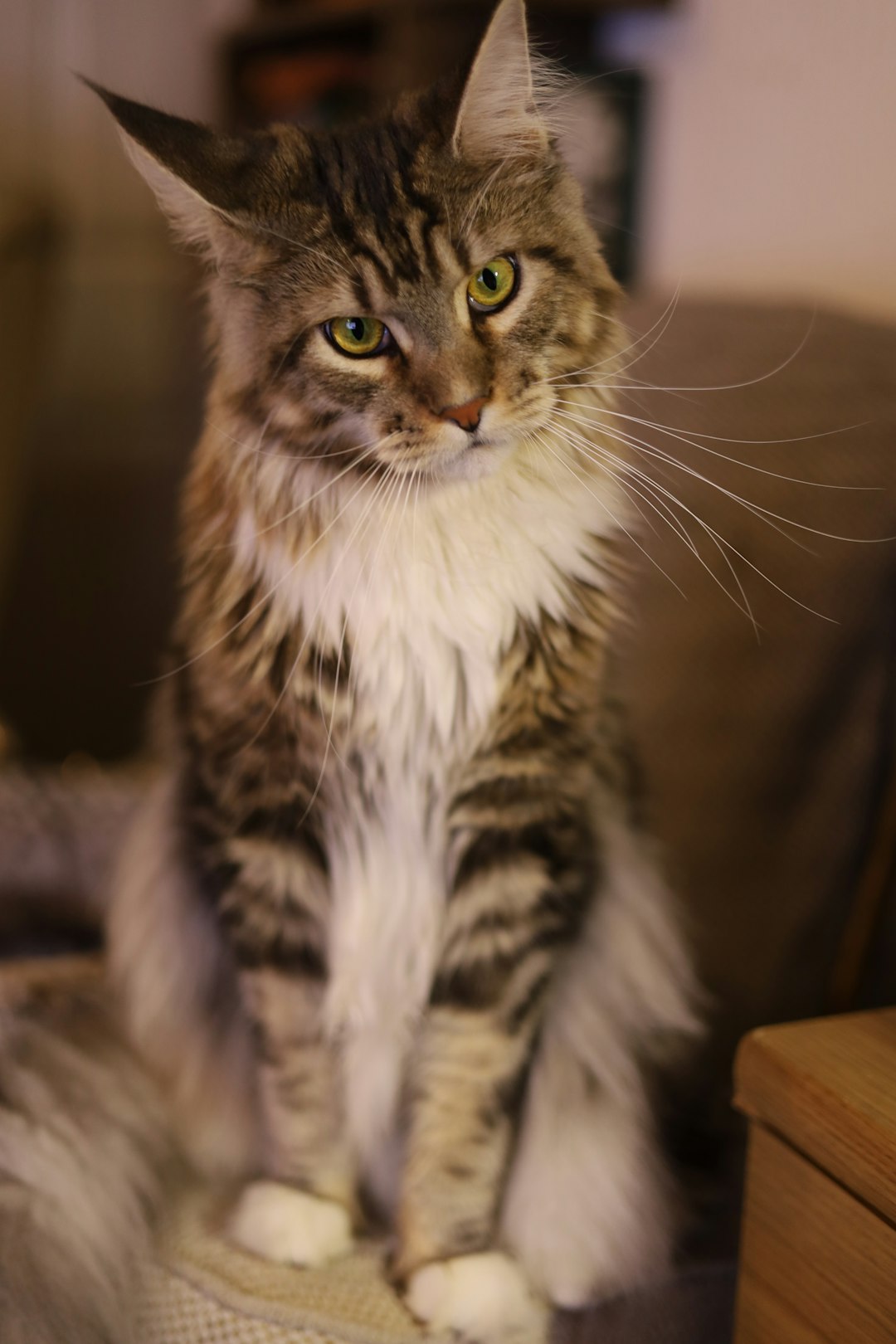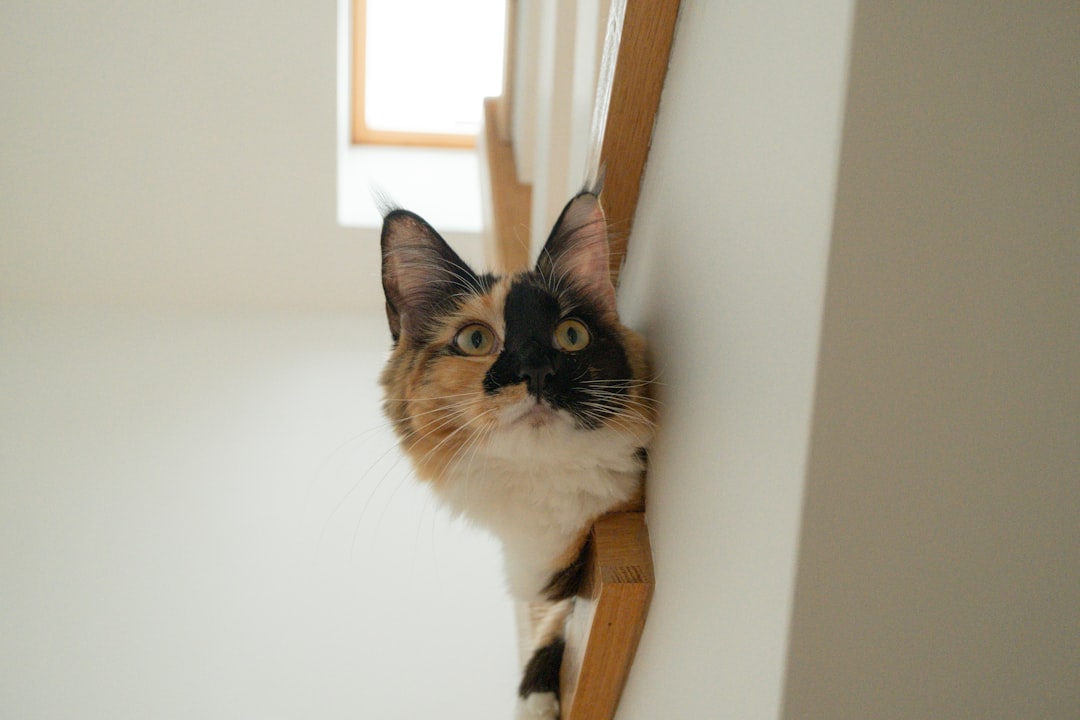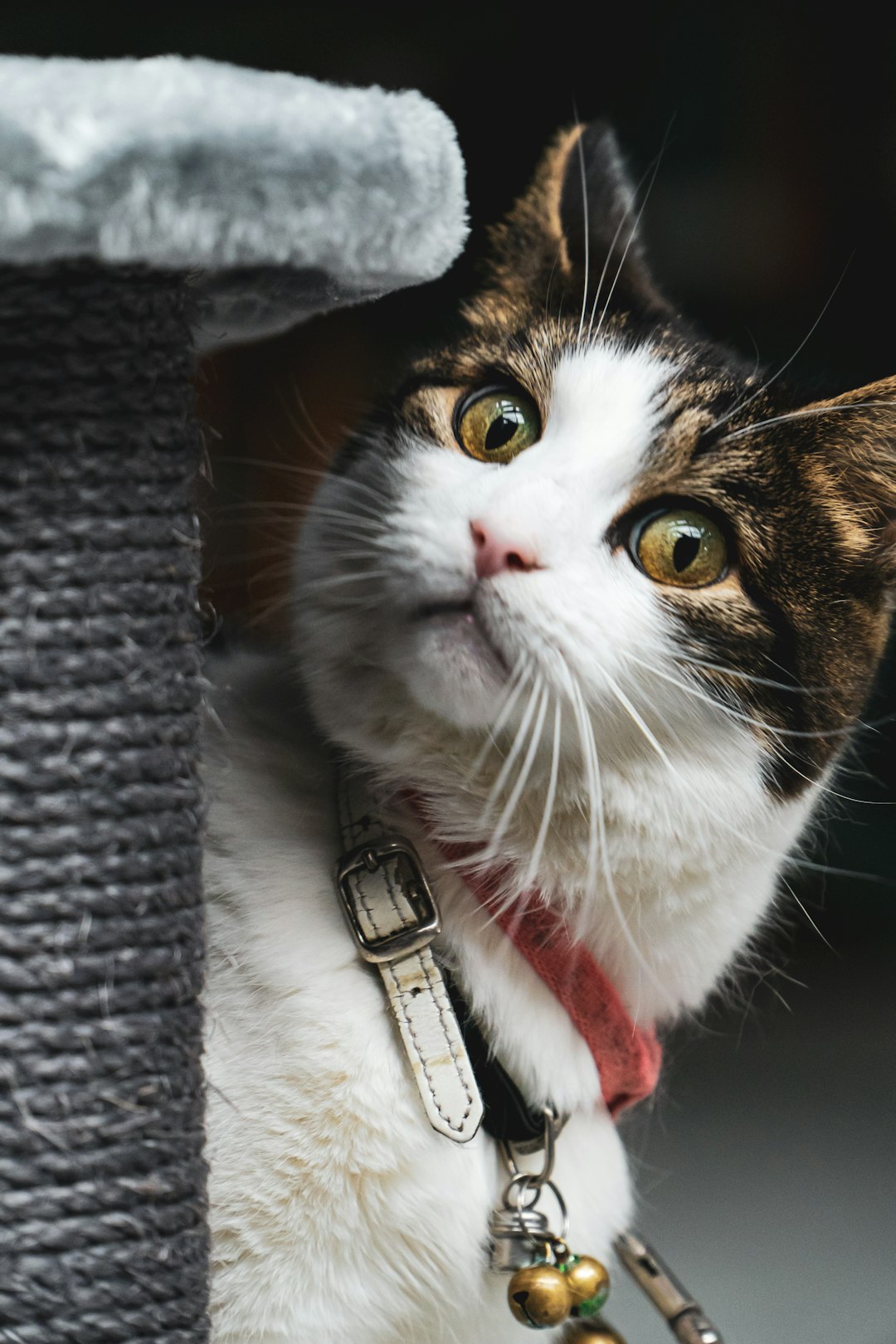Nestled among the windswept steppes of Central Asia lies a feline enigma: the manul cat, also known as the Pallas’s Cat. With its squashed face and fluffy coat, this pint-sized predator brings a whole new level of cute to the concept of wildcats. But beneath that adorable exterior lies a fascinating life shaped by unique habitats and clever survival strategies. Curious to dive deeper into the captivating world of the manul cat? Buckle up, because we’re about to embark on a journey through its remarkable life and habitat!
Overview of the Pallas’s Cat

The manul cat, or Pallas’s cat, is a small but mighty feline that prowls the grasslands and steppes of Central Asia. With its stocky build and plush coat, this cutie packs a punch in the adaptation department.
Here are some fun facts to understand the allure of the manul cat:
- Size Matters: Typically, it weighs around 8 to 12 pounds—almost the size of a house cat, but with the heart of a lion!
- Coat of Many Colors: Their grayish fur is dappled with dark stripes, providing them excellent camouflage in rocky terrains.
- Eyes on the Prize: With large, round pupils, they hunt primarily during dawn and dusk, giving the whole “sneaky cat” concept a new level of cuteness.
A true master of disguise, the manul cat showcases nature’s creativity in action. This elusive creature is a testament to how fascinating felines can be, and as we dive deeper, you’ll discover just why they deserve our admiration and protection!
Physical Characteristics of the Manul Cat

The manul cat, also known as Pallas’s cat, certainly turns heads with its adorable yet impressive features. Here’s what makes this feline a true standout:
- Fluffy Fur: The manul cat sports dense, long fur that not only keeps it warm in the cold steppes but also helps it blend into its surroundings—excellent for stealthy hunting!
- Stocky Build: Unlike your typical sleek cat, the manul has a compact, sturdy build. They weigh from 5.5 to 9.5 pounds and stand only about 9 to 10 inches tall at the shoulder.
- Distinctive Face: With large, rounded ears and strikingly expressive eyes, the manul cat has a face that’s nothing short of charming. Those big pupils help it see in low light—a necessity for their evening escapades.
- Tail Talk: Their tail, thick and bushy, clocks in at about a third of the body length, giving it superb balance as it prowls rocky terrains.
In summary, the physical traits of the manul cat provide the perfect combination of functionality and cuteness—a sight to behold in the wild!
Behavior and Social Structure

The manul cat, also known as Pallas’s cat, showcases some fascinating behaviors and social dynamics that are as intriguing as its appearance. Here’s a breakdown of the manul cat’s personality and societal structure:
- Solitary Lifestyle: Unlike some feline party animals, the manul cat enjoys its alone time. These fluffballs prefer solitary hunting to avoid unwanted company at meal time.
- Territorial Marking: Manul cats are quite prideful. They use scent marking and scratching to establish and defend their territory—in essence, claiming their own little kingdom in the wild.
- Vocalizations: Although quiet usually, when they do decide to speak, their vocalizations can range from purring to odd hissing sounds. It’s their way of communicating without needing a “talking stick.”
- Mating Behavior: During the breeding season, these cats become more social, engaging in display behaviors and courtship rituals that make Romeo and Juliet seem like amateurs.
In summary, the behavior and social structure of the manul cat is unique and reflects its adaptation to a solitary life in harsh environments. Understanding this helps in appreciating the delicate balance of their ecosystem and the manul cat’s role within it.
Habitat and Range

The manul cat, also known as Pallas’s cat, thrives in some of the planet’s most breathtaking landscapes. Let’s embark on a little journey through the various habitats that these fluffy felines adore.
- Geographic Range: The manul cat roams the steppes of Central Asia, stretching its territory across:
- Mongolia
- Kazakhstan
- Northern China
- Parts of Afghanistan and Pakistan
- Preferred Habitat: These charming little cats prefer to bask in:
- Grasslands: Their prime turf for hunting and frolicking.
- Rocky Outcrops: Perfect for hide-and-seek with predators.
- Scrublands: A cozy hideout that keeps those whiskers wet from dew!
Fun fact: Despite their affinity for open spaces, manul cats love to sneak away to the safety of shrubs and rocky crevices when feeling shy. So next time you’re gazing at a mountain range, remember: some elusive, fluffy charmers might just be hiding in plain sight!
Diet and Hunting Techniques
When it comes to dining, the manul cat, also known as the Pallas’s cat, takes a gourmet approach! This feline has its own unique flair for hunting and a diverse menu to match. Let’s dig into its culinary habits:
- Diet: The manul cat primarily feasts on:
- Rodents: Their favorite prey, think small to medium-sized critters.
- Birds: When the mood strikes, a little fowl delight adds variety to their plate.
- Insects: Crunchy snacks, anyone?
- Hunting Techniques: The manul cat’s hunting style is nothing short of artistic:
- Stalking: Quietly and cautiously, they stalk their prey with a surprising amount of stealth.
- Pouncing: They often rely on short, powerful pounces to capture unsuspecting rodents hiding in the grass or underbrush.
- Ambush: Utilizing their natural camouflage, manul cats often ambush prey, waiting patiently until the perfect moment.
With an adaptive diet and a crafty hunting strategy, the manul cat thrives in its rugged habitat. It’s clear this furry predator knows exactly how to keep its dinner plate filled!
Reproduction and Lifecycle
The manul cat, also known as the Pallas’s cat, leads a fascinating life when it comes to reproduction. Here’s a peek into their wild world:
- Mating Season: The mating season typically occurs from January to April. During this time, males serenade females with a variety of charming and not-so-charming vocalizations.
- Gestation: After a successful courtship, females enjoy a gestation period of around 66 to 75 days—a respectable time to prepare for parenthood.
- Kittens: Each litter usually sports 2 to 6 adorable kittens. These little furballs are born blind and rely on their mother’s diligent care for survival.
- Weaning: As they reach about 4 to 5 weeks old, the youngsters start transitioning to solid food. By 10-12 weeks, they’re ready to flex their hunting skills.
- Independence: Kittens become independent at 5 to 6 months, strutting off into their own territories, equipped with skills learned from watching their mother—who’s a pro at being a manul cat mom!
Overall, the lifecycle of the manul cat is as intriguing as it is adorable. Keep an eye out—who knows where their curious paws might take them next!
Threats to the Manul Cat
The manul cat, or Pallas’s cat, faces a plethora of threats that jeopardize its existence, making it a feline in peril. Understanding these challenges is essential for conservation efforts. Here’s a quick rundown of the dangers this adorable yet elusive creature encounters:
- Habitat Loss: Rapid urbanization and agricultural expansion continuously encroach on the manul cat’s home turf, leaving them with fewer places to roam and hunt.
- Poaching: Illegal hunting for pelts and the pet trade significantly reduces their population. This furry feline deserves better than being mere fashion accessories!
- Declining Prey Populations: The manul cat primarily feeds on rodents and other small animals. If these prey species become scarce, our charming cat faces starvation.
- Climate Change: Fluctuating weather patterns disrupt their habitats, impacting both the manul cat and its food sources.
- Human Conflict: Livestock predation leads to retaliatory killings, often incorrectly assigning blame to these feline felons.
By understanding these threats, we can take steps towards ensuring a brighter future for the remarkable manul cat.
How to Help Protect the Pallas’s Cat
The manul cat, with its adorable round face and fluffy fur, deserves all the love and protection we can muster. Here’s how you can make a difference:
- Spread Awareness: Share your newfound knowledge about the manul cat on social media. The more people know, the more support we can rally for its conservation.
- Support Conservation Organizations: Look for wildlife organizations dedicated to protecting the manul cat and its habitat. Donations or volunteer work can go a long way!
- Reduce Your Footprint: By making eco-friendly choices, we can help minimize habitat loss. Simple acts like reducing plastic use and conserving energy make a difference.
- Promote Sustainable Practices: Buy products that are sustainably sourced, and encourage local businesses to follow suit. Everybody loves a business that supports wildlife!
- Advocate for Policies: Engage with local governments to promote policies that protect the habitats of the manul cat. Every action counts!
By taking these steps, you’ll play a vital role in ensuring the manul cat thrives for generations to come. Remember, even the smallest efforts can lead to big changes!
How to Help Protect the Pallas’s Cat
The enigmatic manul cat, or Pallas’s cat, needs a little TLC to thrive in its native habitats! Luckily, you can play a part in ensuring this fluffball of a feline remains a staple of Central Asian ecosystems. Here are some ways you can lend a paw:
- Support Wildlife Conservation Organizations: Many groups focus on protecting the manul cat’s natural habitat. They often organize fundraisers and awareness campaigns—get involved!
- Educate Others: Spread the word! Share fun facts about the manul cat on social media, and encourage friends and family to learn about this fascinating creature’s plight.
- Adopt Sustainable Practices: Reduce your carbon footprint, go green, and support sustainable products. This encourages preservation efforts for essential habitats where the manul cat roams.
- Report Sightings: If you’re fortunate enough to spot a manul cat, report your sighting to local conservation groups. Citizen science can provide invaluable data for research!
By taking these steps, you can join the ranks of dedicated enthusiasts working tirelessly to protect the charming manul cat and its habitat. After all, every effort counts in preserving this little feline’s future!
How to Help Protect the Pallas’s Cat
Saving the manul cat isn’t just a job for superheroes; you can play a part in this feline rescue mission too! While these adorable furballs might seem elusive, here are some effective ways you can help protect the Pallas’s cat:
1. Support Conservation Organizations
- Donate to wildlife conservancies dedicated to the manul cat’s habitat.
- Volunteer your time for local conservation projects.
2. Raise Awareness
- Share your love for the manul cat on social media.
- Educate friends and family about their endangered status!
3. Adopt Sustainable Practices
- Reduce plastic use to help protect the environment.
- Support sustainable farming practices that don’t encroach on their habitat.
4. Advocate for Policy Change
- Contact local representatives advocating for wildlife protection laws.
5. Visit Sanctuaries and Zoos
- Visit places that promote awareness and conservation of the manul cat.
By taking these simple steps, you’re joining the mission to ensure the manul cat thrives for generations to come. Remember, every action counts when it comes to protecting these charming felines!
Frequently Asked Questions
What exactly is a Manul Cat, and why does it have such a quirky name?
Ah, the Manul Cat, or as the cool kids call it, the Pallas’s Cat! Named after the legendary naturalist Peter Simon Pallas, this small feline flaunts its fur coat with confidence. Sporting a fabulously fluffy exterior and a face that seems to say ‘No pictures, please!’, the Manul is native to the grasslands and steppes of Central Asia. With its short legs and marvelous mane, it’s less of a catwalk model and more of a fuzzy loaf!
What’s the usual habitat of the Pallas’s Cat?
Picture, if you will, the expansive steppes of Mongolia and the rugged terrains of Central Asia – that’s the Manul’s prime real estate! This ball of fluff prefers rocky outcrops, grasslands, and even scrubland, elegantly blending into its surroundings like a master of hide-and-seek. They are incredibly adaptable, though they shy away from dense forests, opting instead for open spaces where their impressive camouflage can really shine!
Are Manul Cats solitary creatures, or do they fancy the company of other cats?
Oh, the Manul Cat is the ultimate introvert! These solo artists prefer a life of solitude, relishing their personal space like a hermit at a meditation retreat. Territorial by nature, they’re not one to share their snacks. With their own unique scent markings and charming personalities, they live life on their own terms, reaping the rewards of independence – no sharing of the remote control here!
What do Manul Cats eat to maintain their purr-fect physique?
Much like an exclusive culinary critic, the Manul Cat has refined tastes! Their menu primarily features small mammals, including rodents and, if the mood strikes, they might jazz things up with a side of birds or insects. Master hunters, they leverage their stealth and surprise to catch prey, showcasing a dining style that’s both exquisite and efficient. It’s a glamorous life, dining à la carte in the wild!



